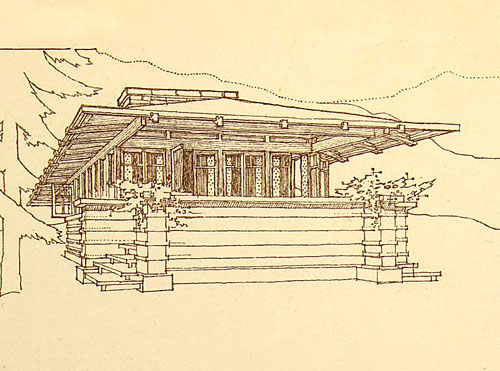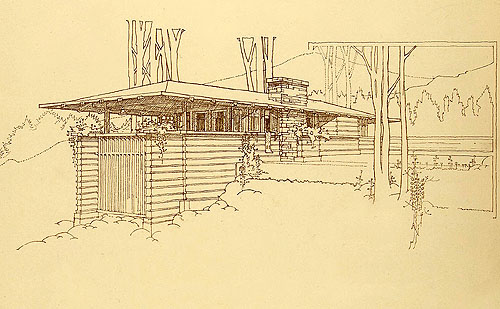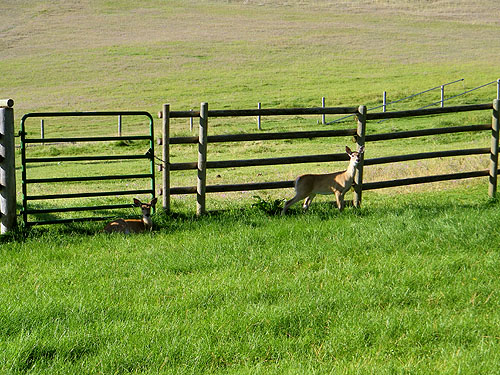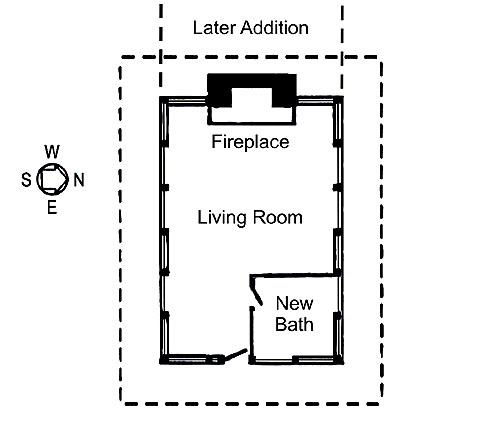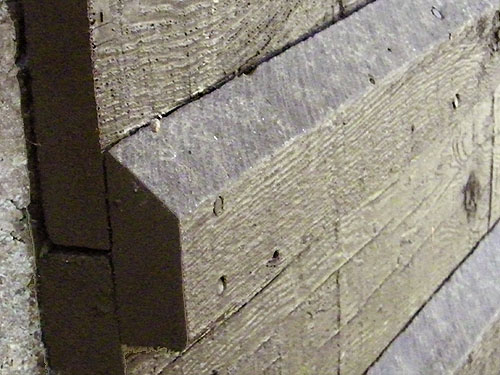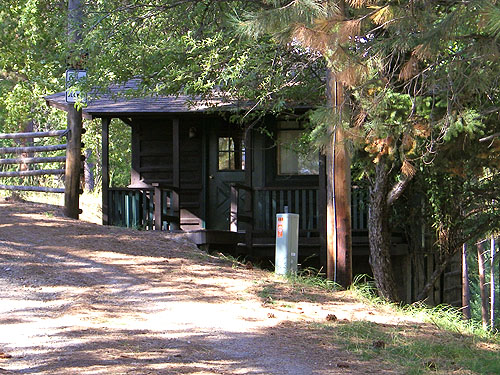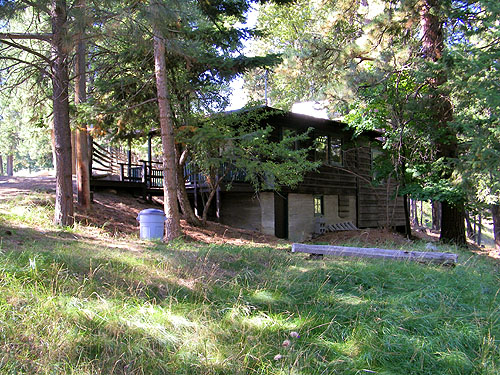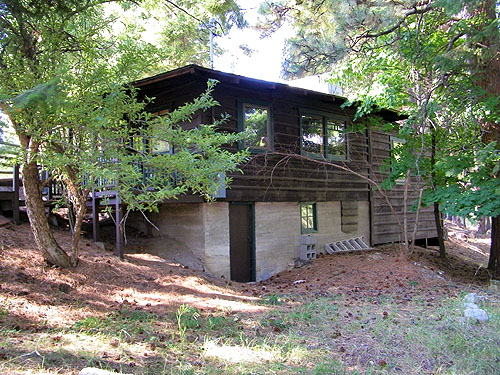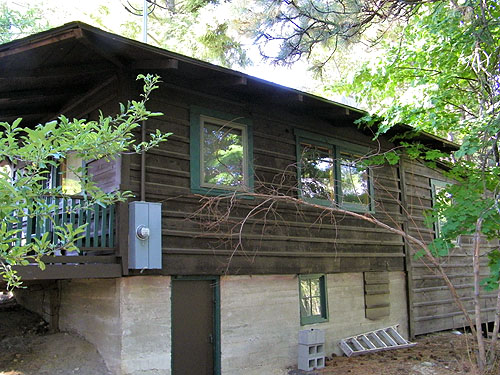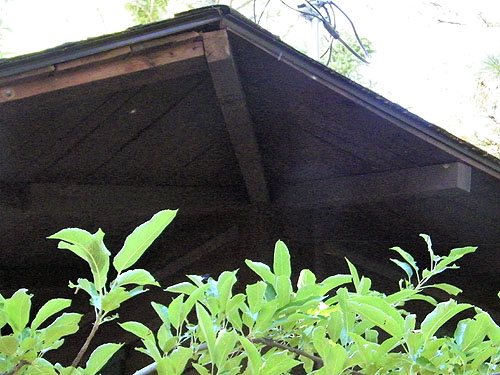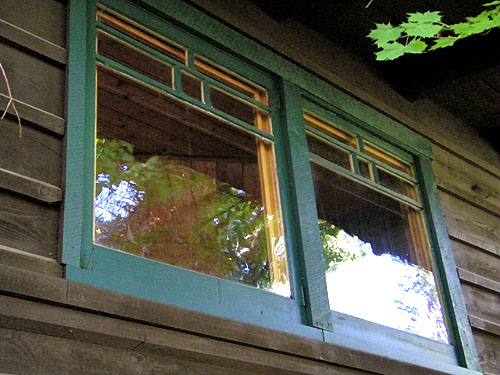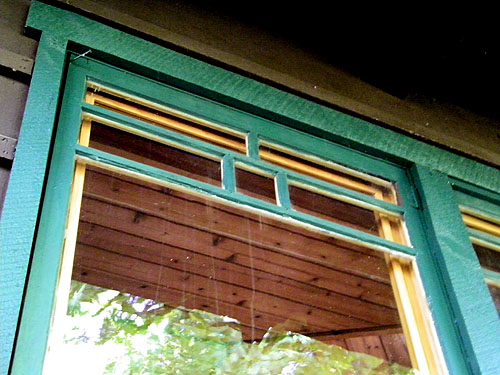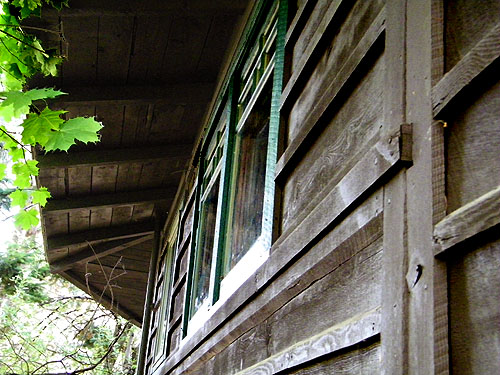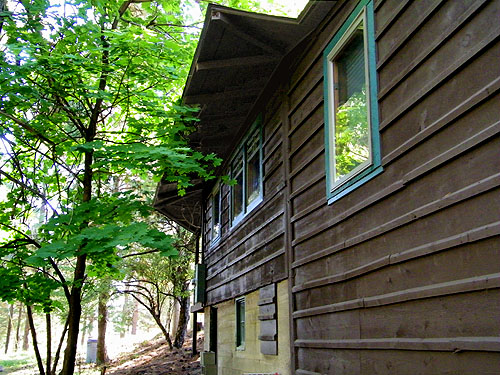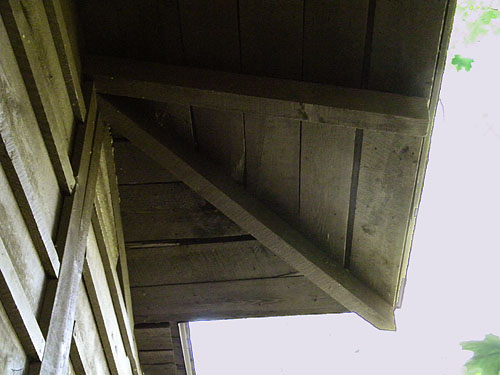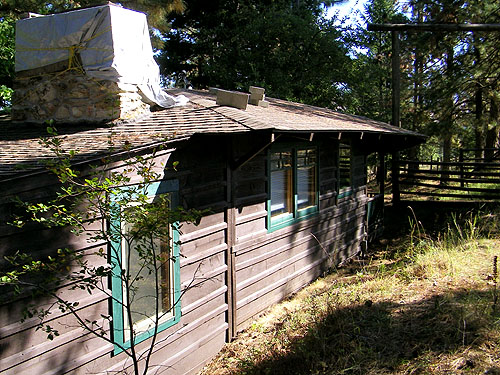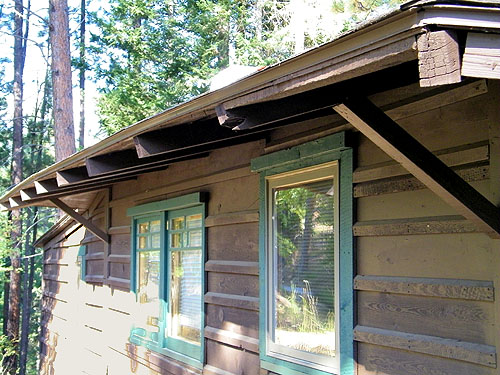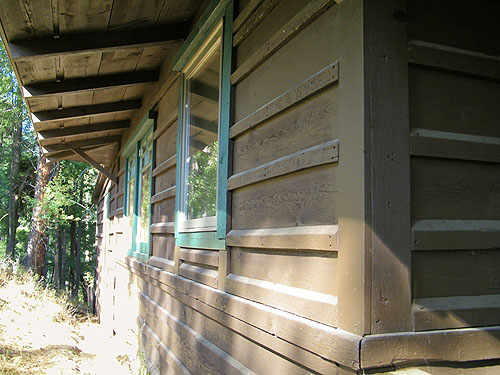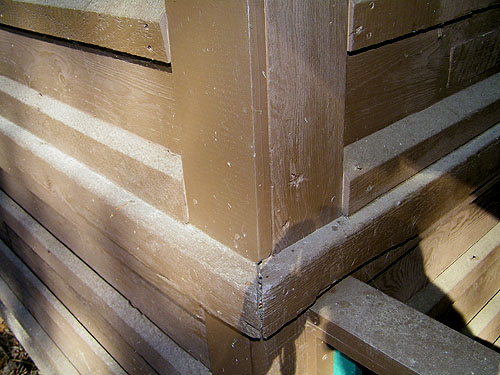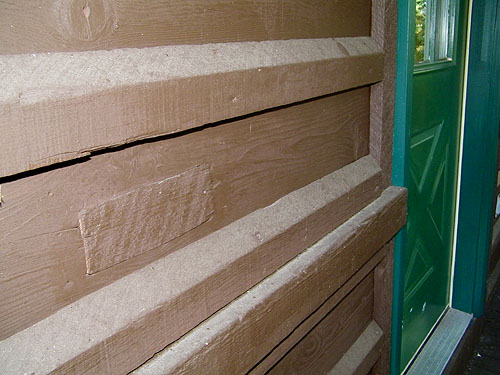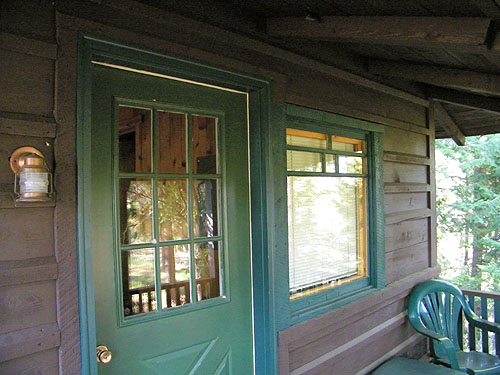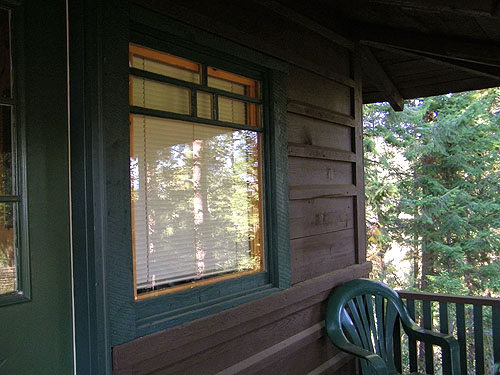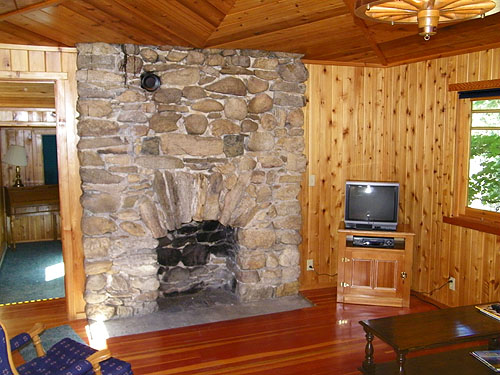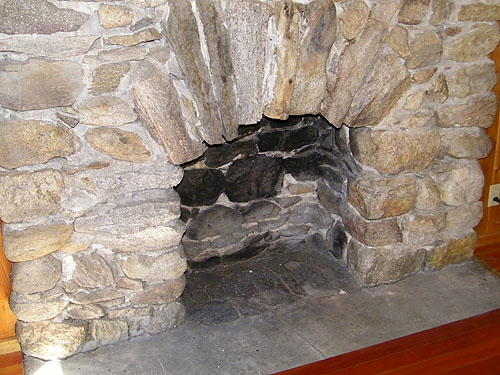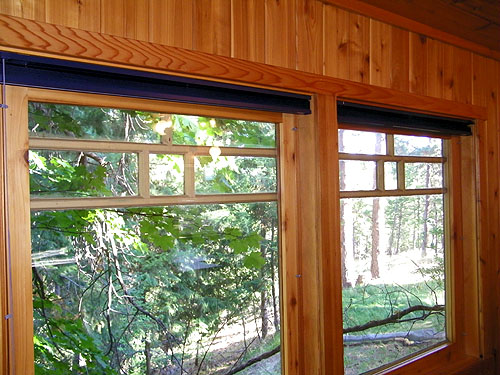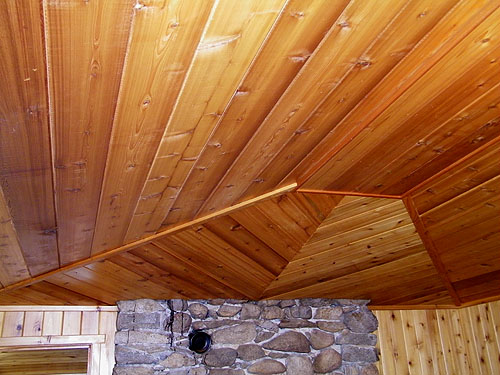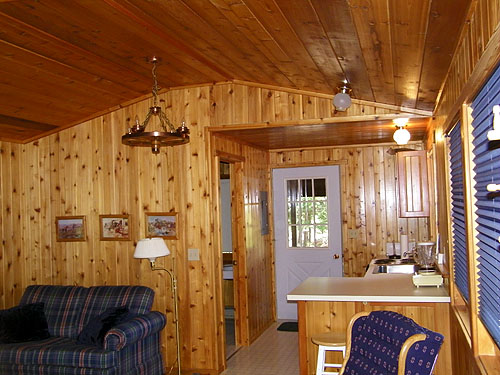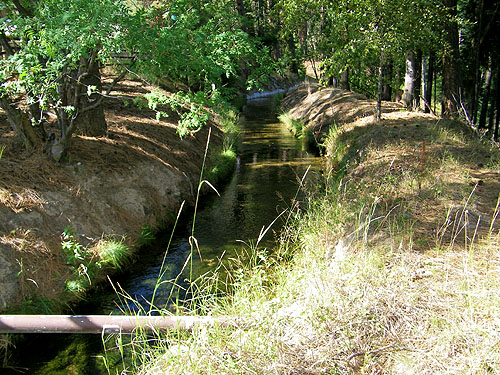[flw/_Private/Navbar Be-mail.htm]
Como Orchard Summer Colony (University Heights), Darby, Montana (1909) (S.144)
Manager's Office (One Room Cottage), Photographed by Douglas M. Steiner, 2009 The Como Orchard Summer Colony was marketed to University of Chicago Professors as "University Heights Community and Orchards." The area is still called University Heights today. Purchase five to ten acres and a cottage, and the company would manage the orchard and market the crop. Perfect for a professor. Vacation for three months and enjoy the Bitterroot Valley. The Clubhouse was conceived as the center of the community. It contained two communal Dining Rooms and a two story lounge in the center for gathering. As a result, most Cottages were designed without kitchens. Of the over fifty cottages that were planned, twelve were constructed. Today, one three-bedroom Cottage and the Managerís Office remain and are maintained.
Unlike the "cold inhospitable place" discovered by Lewis and Clark in September 1805, I found the Bitterroot valley beautiful and inviting. Driving from Hamilton to Darby early Saturday morning, I was overwhelmed with its beauty. As I parked, two deer were grazing not more than 30 feet away.
The Manager's Office is an example of the one-room Cottage.Like the Clubhouse, this cottage was built on a 3.5 foot grid and is approximately 300 square feet. In 1982 the Manager's Office was in a "hopeless condition, much modified and near collapse", according to Hildebrand and Bosworth. Many changes have been made over the past 100 years. The original exterior horizontal board and batten siding still exists. While the design is visually pleasing, due to the extreme Montana weather, it enhances its deterioration. The Porch on the East end has been added and the Roof obviously extended by observing the underside of the Roof over the porch. A room has been added to the West end of the Cottage. Two of the original seven windows have been replaced. The original front door has been replace. On the interior, a small Kitchen has been added to the Southeast corner and possible a Bath to the Northeast corner. The Fireplace is original, but the interior knotty pine paneling is new. A door has been added to the left of the Fireplace to access a bedroom that was added to the West end of the Cottage. It was built as summer Cottages so lacked central heating.
Text by Douglas M. Steiner, Copyright September 2009.
Plate XLVII(b). Typical cottages, Como Orchard Summer Colony. Wright included three variations of the small cottage. Options were many. A single living room with fireplace and porch. A "duplex", two living rooms, fireplaces in the center, and porches on either end. A living room, bedroom, bath and porch. Two parallel cabins with bedrooms in between forming two, two bedroom duplexes. Options were available on larger units by adding bedrooms, a kitchen or dining room. Plate XLVII(b). Typical cottages, Como Orchard Summer Colony. This version appears to be a living room, bedroom, bath and porch. Wright designed built-in planters like many of his buildings at that time. Unlike the "cold inhospitable place" discovered by Lewis and Clark in September 1805, I found the Bitterroot valley beautiful and inviting. Driving from Hamilton to Darby early Saturday morning, I was overwhelmed with its beauty. As I parked, two deer were grazing not more than 30 feet away. Although many changes were made to the Manager's Office over the past one hundred years, a few Wright details still exist. Mullion windows and a stone fireplace. They were built as summer Cottages so lacked central heating. Example of the original exterior horizontal board and batten siding that still exists on the manager's office. While the design is visually pleasing, due to the extreme Montana weather, it enhances its deterioration.
1: Viewed from the East as you approach from the Manager's Office, an example of the one-room Cottage. The Porch on the East end has been added and the Roof extended The original front door has been replace.
2: Viewed from the Northeast. The Porch on the East end has been added. A room has been added to the West end of the Cottage. 3: Viewed from the Northeast. The Porch on the left has been added. A room on the right has been added to the West end of the Cottage. Two of the original seven windows have been replaced. 4: Viewed from the Northeast. The Porch on the left has been added and the Roof obviously extended by observing the underside of the Roof over the porch. A room has been added to the West end of the Cottage. Two of the original seven windows have been replaced. Most likely a Bath was added to the Northeast corner. 5: The Roof was obviously extended by observing the underside of the Roof over the porch. 6: Five of the original seven windows still exist. Two hinges on the right side of the left window are visible. The windows extend outward. 7: Five of the original seven windows still exist. The hinge on the right side is still visible. The windows extend outward. 8: Viewed from the Northwest. The Roof was obviously extended by observing the underside of the Roof over the porch.
9: Viewed from the Northwest. A room has been added to the West end of the Cottage. Two of the original seven windows have been replaced. The addition of a bedroom added on the right is obvious when observing the detail of the Roof of the original Northwest corner, the window on the right, and the batten that does not line up with the original. 10: The addition of a bedroom added to the West end of the Cottage is obvious when observing the detail of the Roof of the original Northwest corner. 11: Viewed from the Southwest. The addition of a bedroom added on the left is obvious when observing the detail of the Roof of the original Southwest corner, the window on the left, and the vertical seem between the two sections. 12: Viewed from the Southeast. The addition of a bedroom added on the left is obvious when observing the detail of the Roof line of the addition. Five of the original seven windows still exist. The original window on the right was replaced to accommodate the addition of a Kitchen. Braces have been added to support the weak end roof rafters. 13: Viewed from the Southeast. Five of the original seven windows still exist. The original window on the right was replaced to accommodate the addition of a Kitchen. The continual horizontal band that runs along the base of the windowsills was a detail Wright added to emphasis horizontal lines.
14: Detail of the horizontal band that runs along the base of the windowsills used by Wright to emphasis horizontal lines. 15: The front door is just to the right. Detail of the board and batten, and the horizontal band that runs along the base of the windowsills used by Wright to emphasis horizontal lines. Remnants of the Manager's Office mail slot are noted. 16: Viewed from the Southeast. The original front door was replaced. Five of the original seven windows still exist. 17: Detail of one of the five original windows that still exist. 18: Viewed from the front door. The Manager's Office is an example of the one-room Cottage. The Fireplace is original, but the interior knotty pine paneling is new. A door has been added to the left of the Fireplace to access a bedroom that was added to the West end of the Cottage. It was built as summer Cottages so lacked central heating. 19: Detail of the original Fireplace. The buildings were built as summer Cottages so lacked central heating.
20: Detail of two of the original windows that still exist. Additional single pane windows have been added to the interior for winterizing. The interior knotty pine paneling is new. 21: The Fireplace stonework is original, but the interior knotty pine paneling is new. 22: Viewed from the Southwest, standing in the doorway that leads to the new bedroom addition. The original front door has been replace. A Bath has been added to the Northeast corner, and a small Kitchen added to the Southeast corner. The interior knotty pine paneling is new. 23: An original irrigation channel close to the Manager's Office, dug over 100 years ago, ran through the original Como Orchard Summer Colonyís 1,600 acres.
BACK
